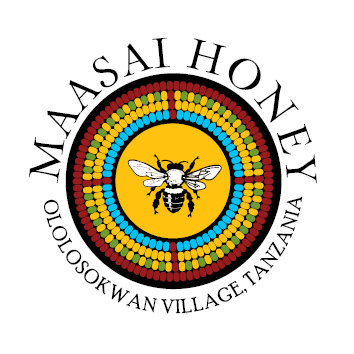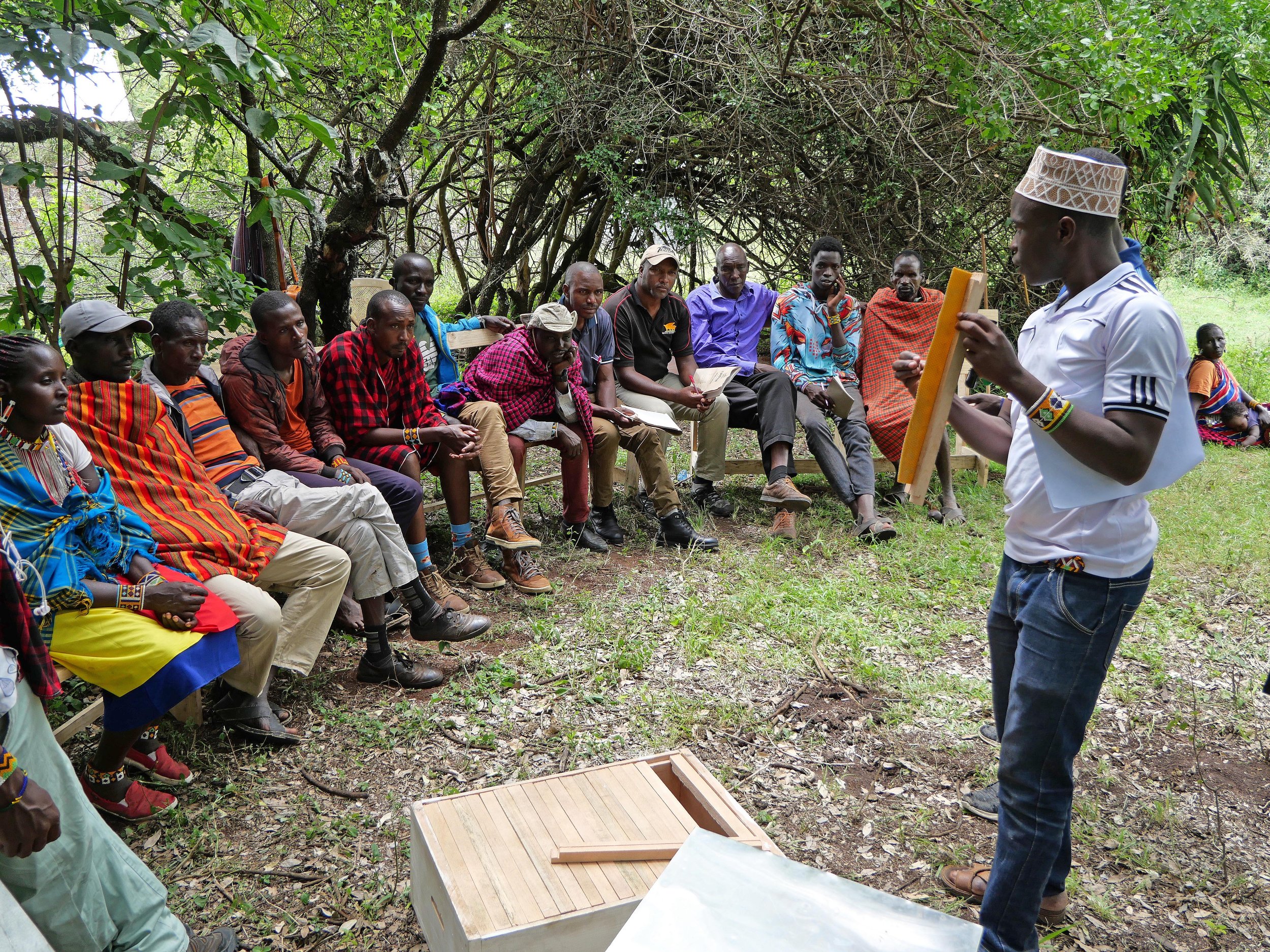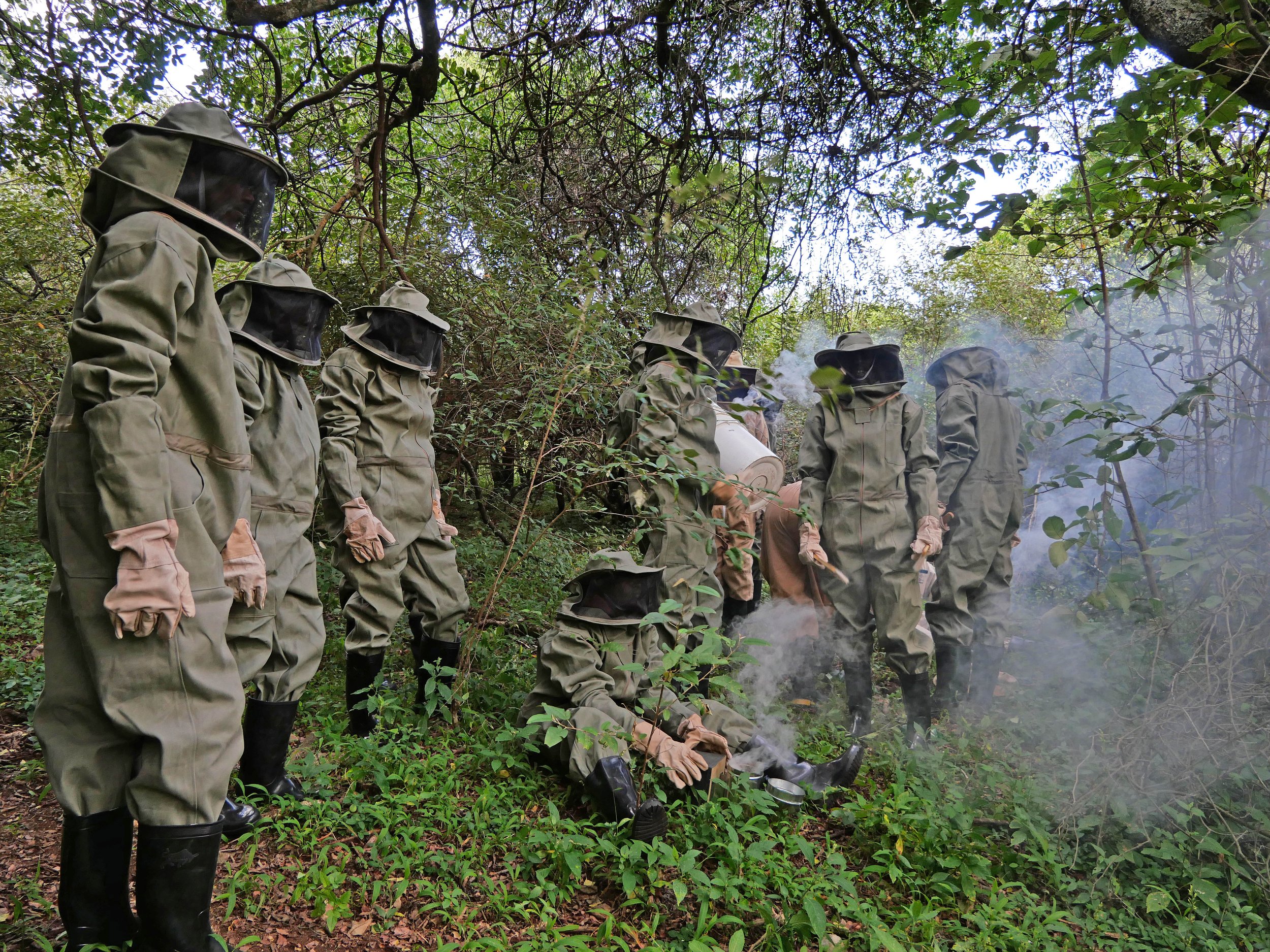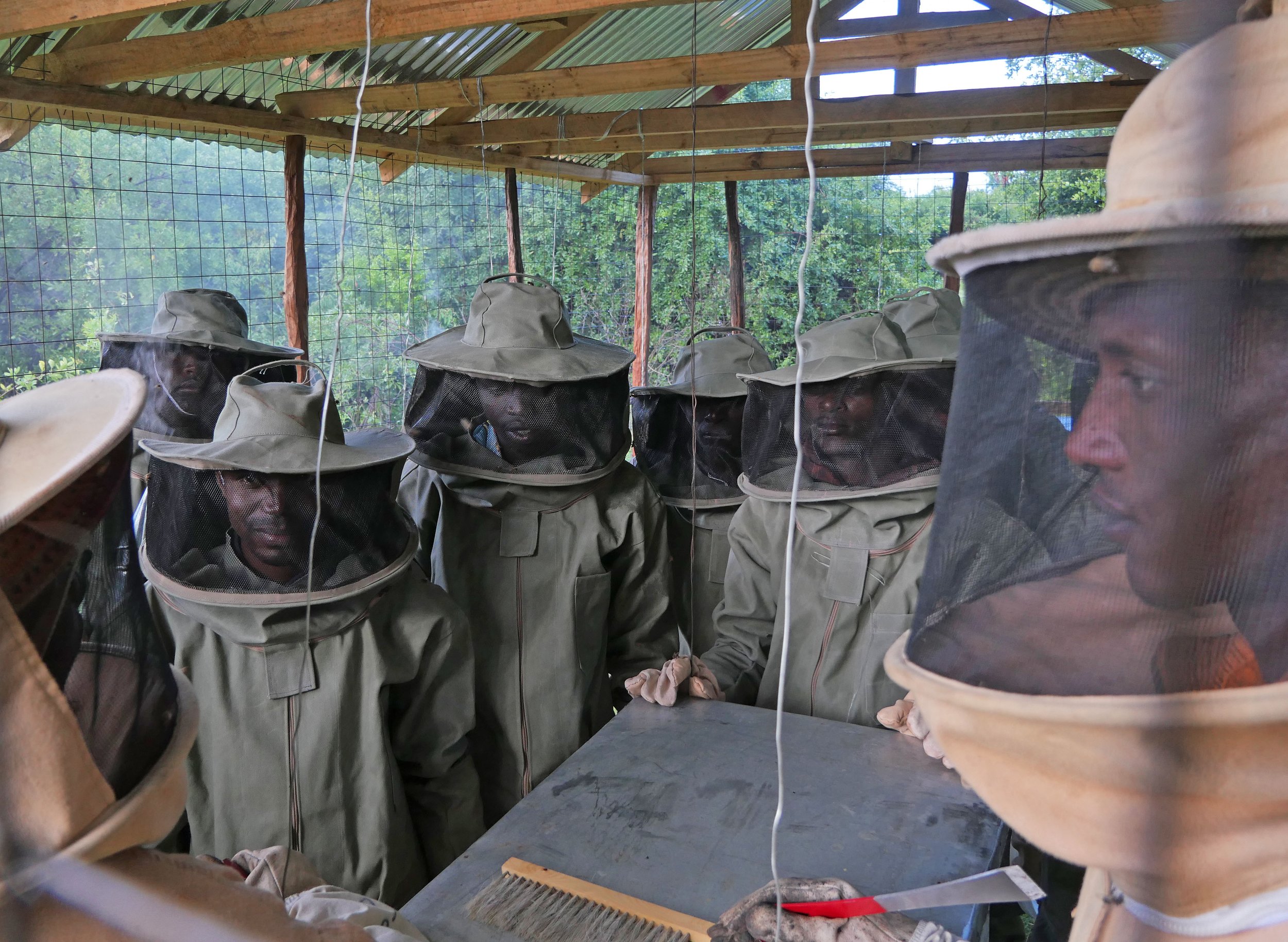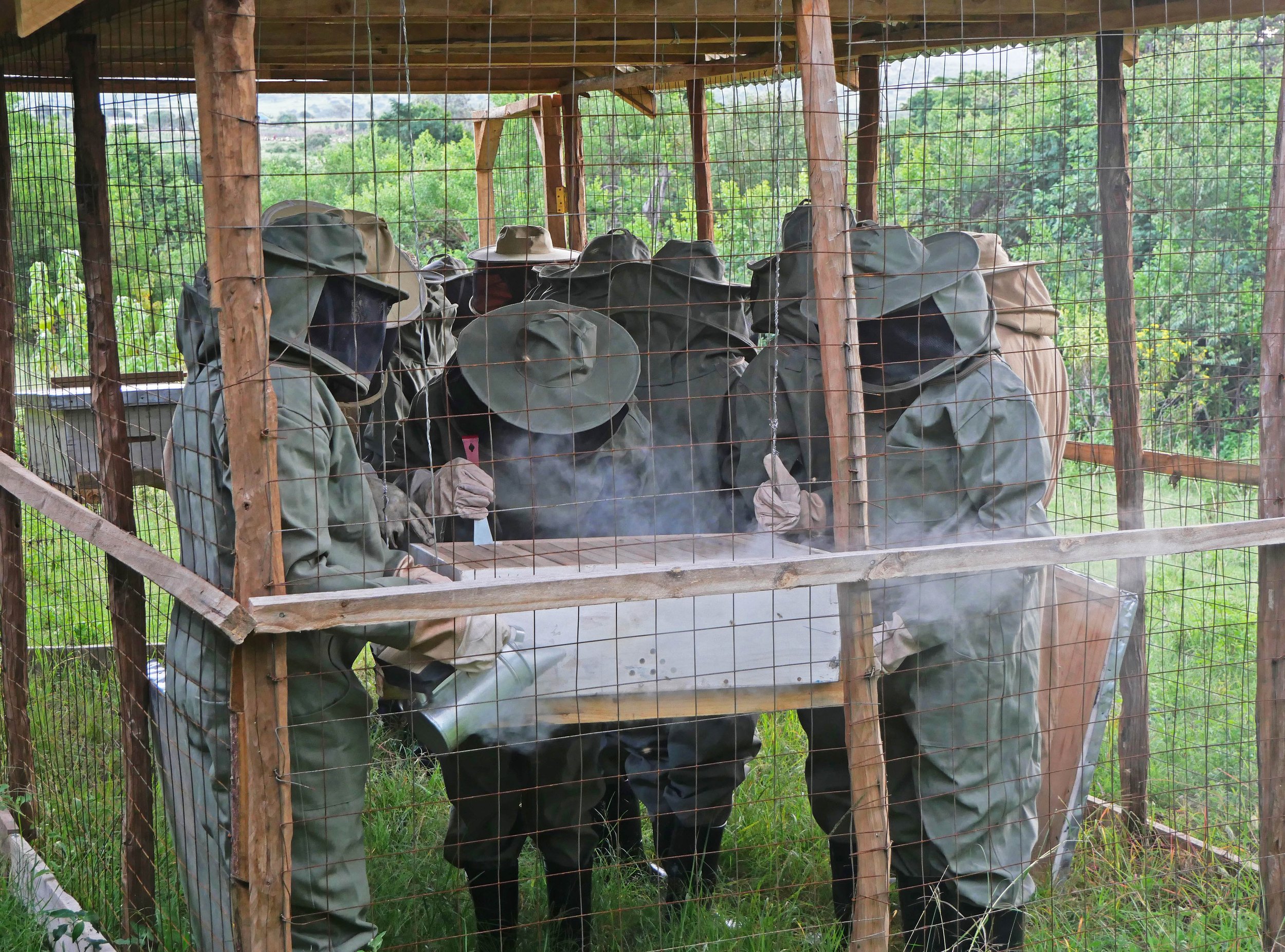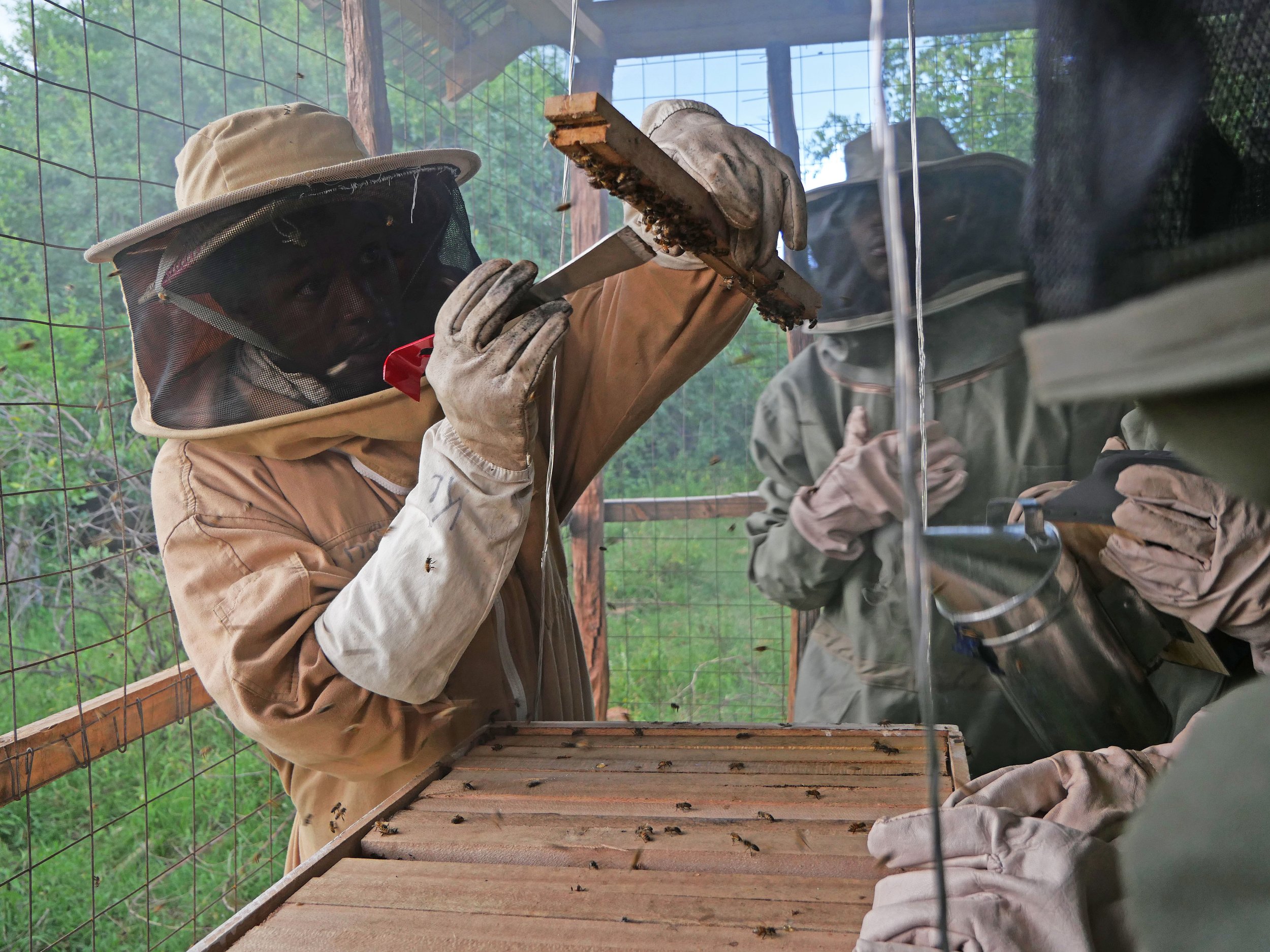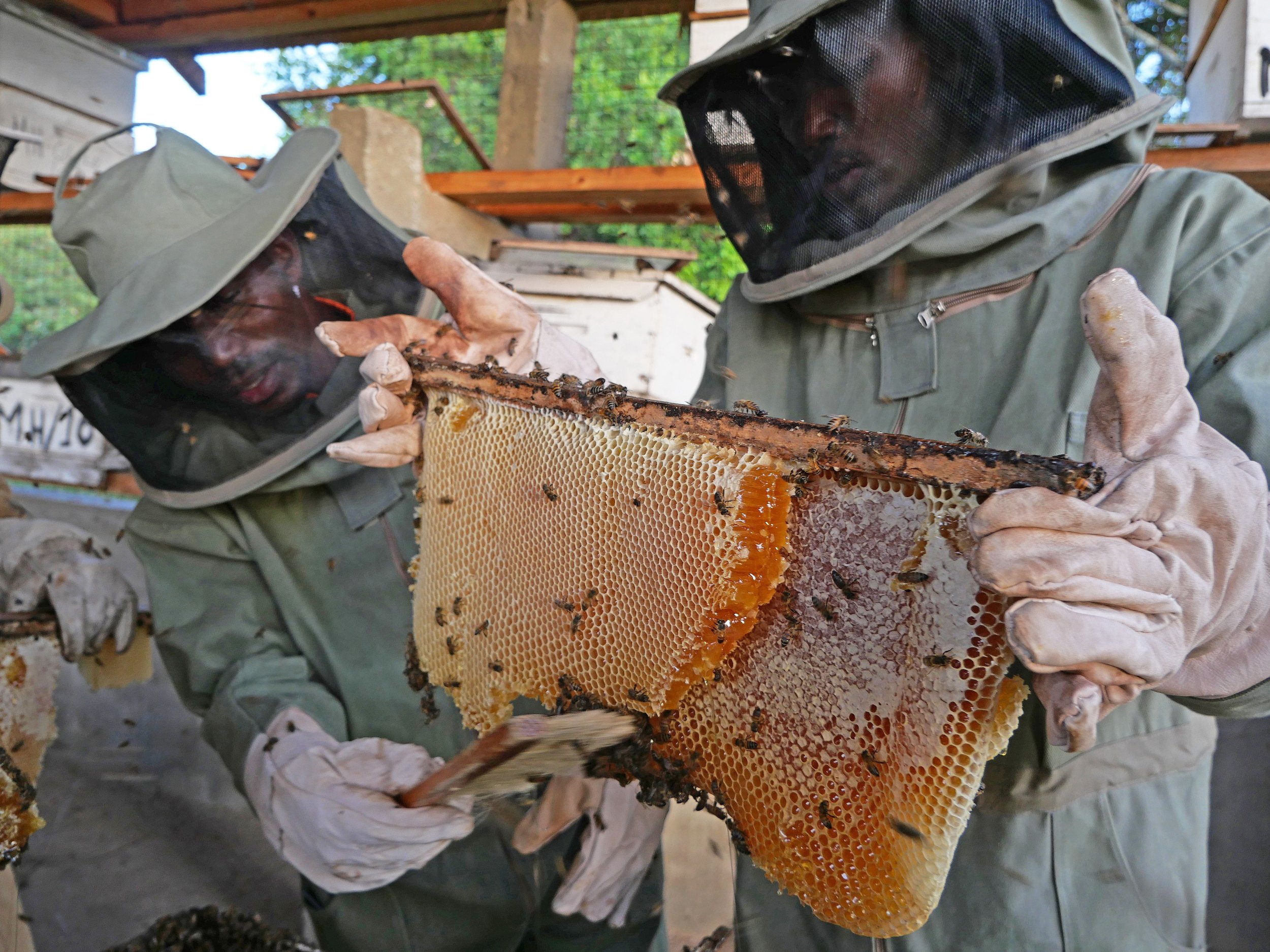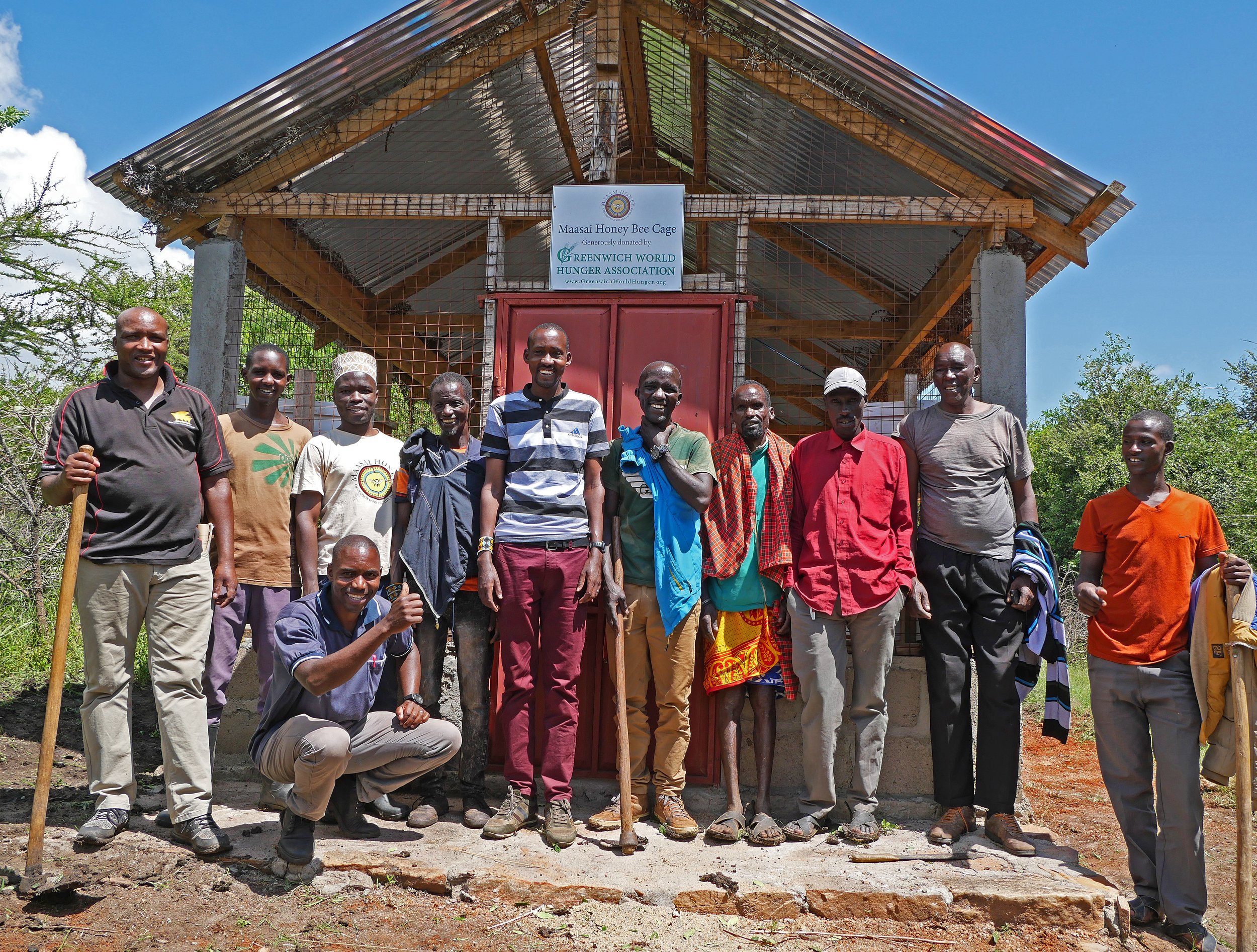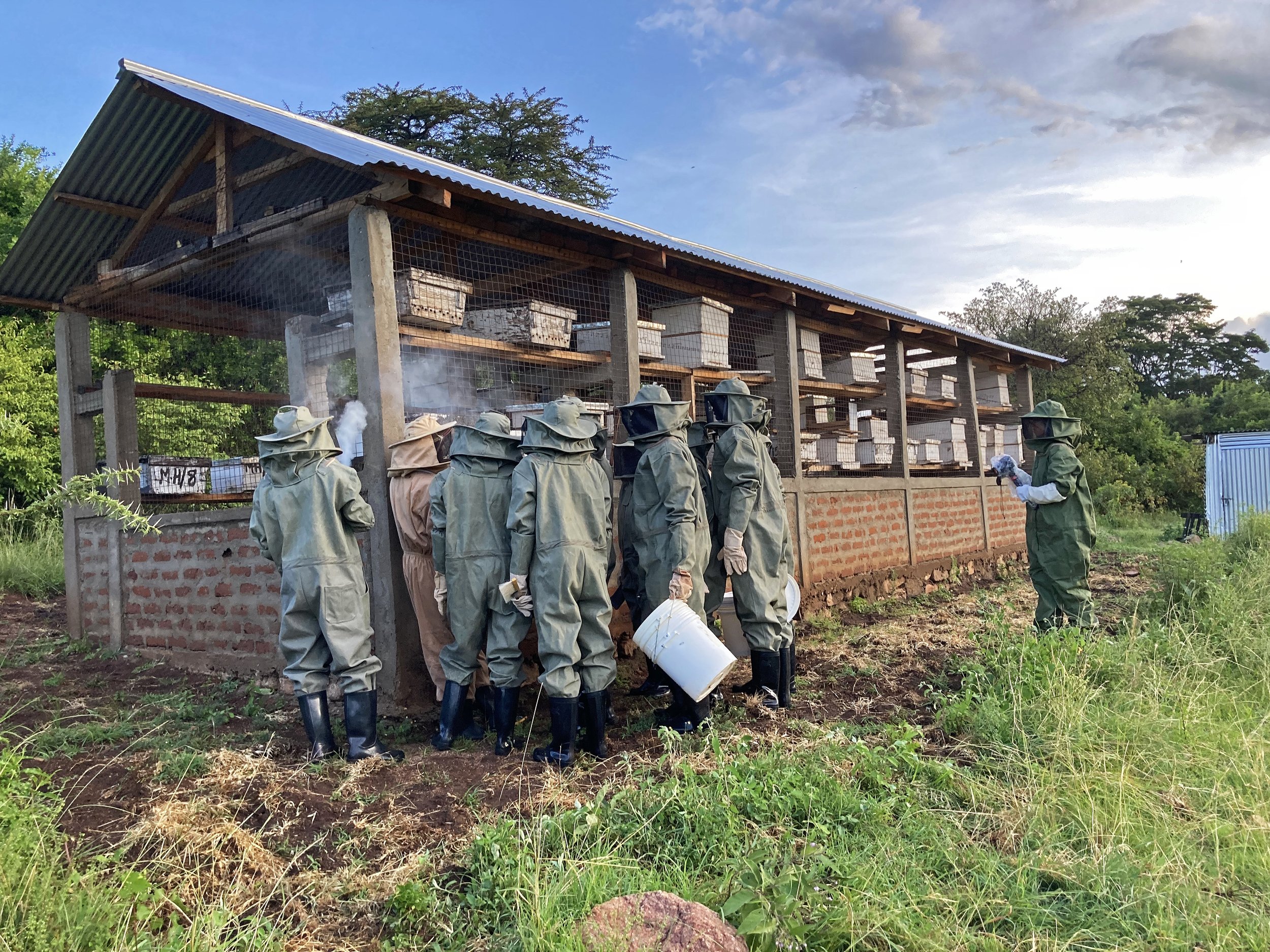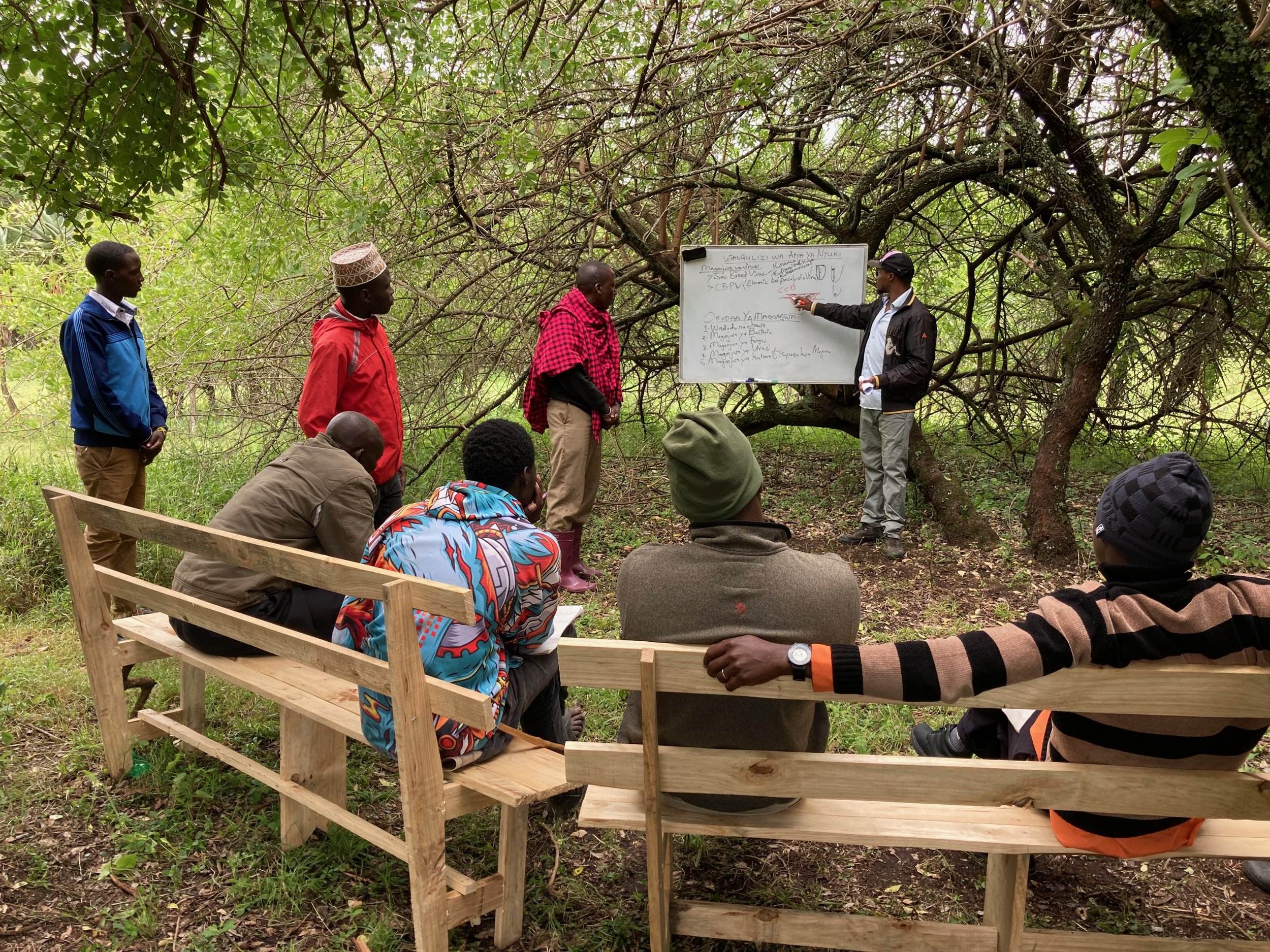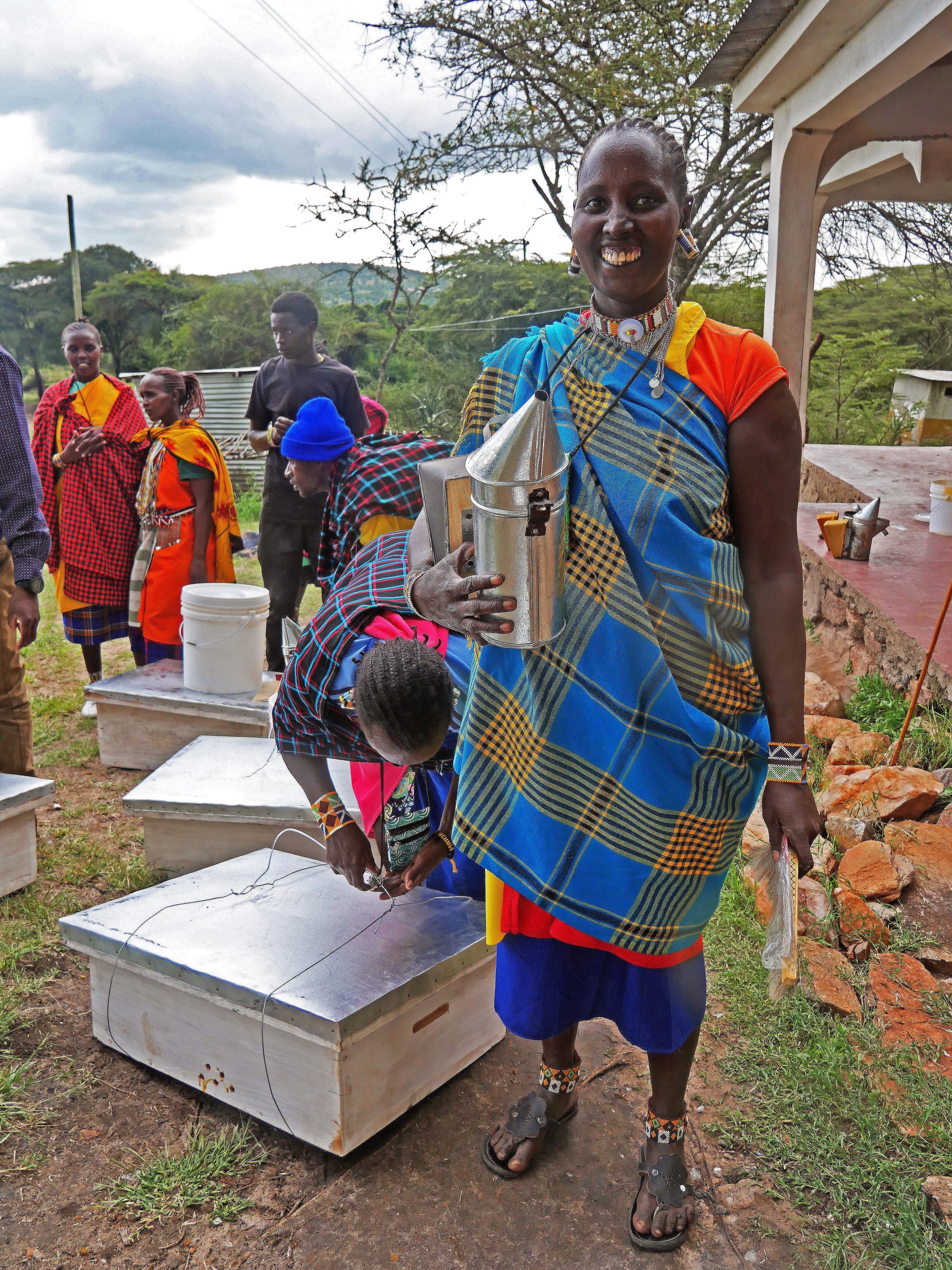Beekeeping Training
Maasai Honey works with Northern Tanzania Beekeeping Company to conduct professional beekeeping trainings in Tanzania!
Maasai Honey is pleased to provide training in top-bar beekeeping to residents of Ololosokwan Village and visitors from all over Tanzania! Two week trainings provide participants with all of the knowledge needed to begin their own home apiaries. Training participants also receive the necessary equipment - a beekeeping suit, boots, gloves, bee smoker, bee brush, hive tool, plus a top bar hive to get them started on their beekeeping journey.
Why top bar hives? Top-bar hives are long, wooden boxes that are lined with frames, and covered by a lid. This single chamber hive makes inspection and harvesting easy, and the frames inside provide a good foundation for bees to build honeycomb. Additionally, top bar hives can be easily hung from trees, so they are the ideal hives for home apiaries and remote locations.
Practical, on-site trainings will take place at our top-bar training cage, which has been generously sponsored by the Greenwich World Hunger Association! This cage has been specially designed so that hanging hives can be opened for demonstrations and hands-on beekeeping lessons. The structure helps to keep the hives secure from wild predators and harsh weather conditions.
The training also encompasses theoretical lessons, that equip trainees with knowledge on apiary selection, hive management techniques, pest control, and honeybee diseases. Here is an outline of the topics covered during the 10-day training:
INTRODUCTION TO BEEKEEPING
Beekeeping terms and definitions
Types of honeybee
Caste of the honeybee
Task of each caste within the colony
Annual Beekeeping Calendar
APIARY SELECTION
Criterions of site selection
Types of apiaries
Apiary hygiene
Apiary layouts & advantages of proper apiary layout
BEEKEEPING TOOLS AND EQUIPMENT
Indigenous beekeeping tools - advantages and disadvantages
Modern beekeeping tools and equipment
Uses of internal inspection tools and equipment
Types of beehives - advantages and disadvantages
HIVE AND COLONY STOCKING
Indigenous ways of colony stocking
Methods of colony stocking
Advantages of each method of colony stocking
Hive hygiene
INTRODUCTION TO HONEYBEE HEALTH
Common bee diseases
Causes of bee diseases
Symptoms of diseases
Prevention of bee diseases
Common pests and predators
Indigenous ways of control
Application of I.P.M. (integrated pest management).
HONEYBEE PRODUCTS
Products from hive
Honey harvesting
How to process the products
Value added products.
BEEKEEPING LAWS
Fee for grading and registration according to National beekeeping Act
Beekeeping in cross-sectoral areas
Beekeeping for ecosystem conservation and management
Beekeeping based industries and products
